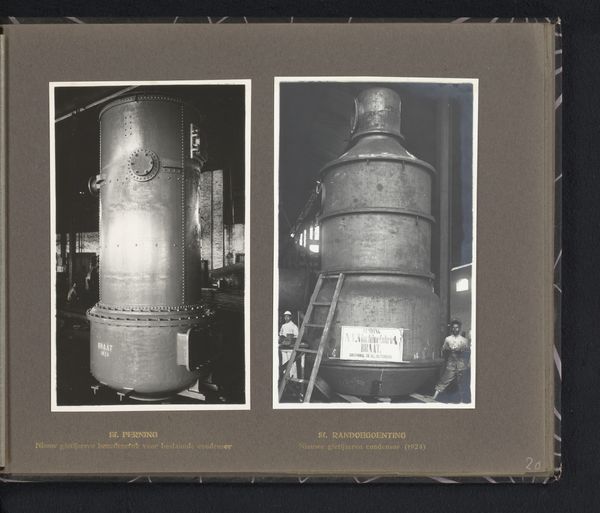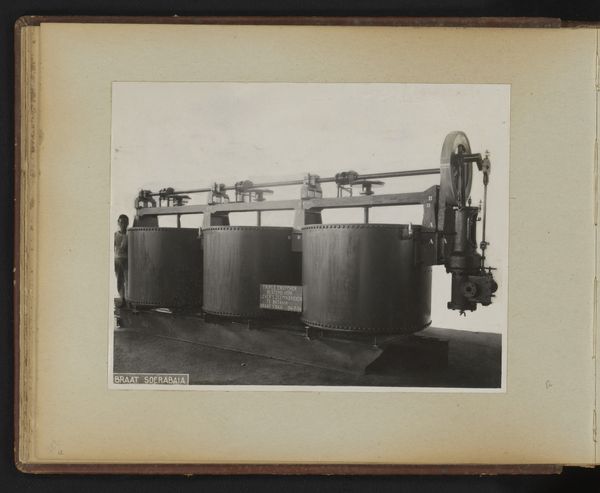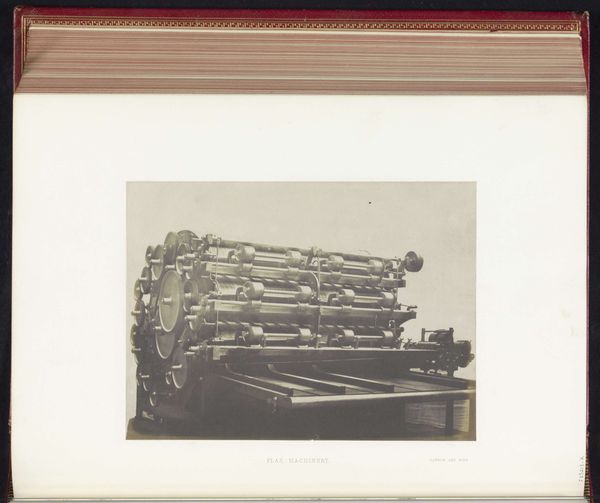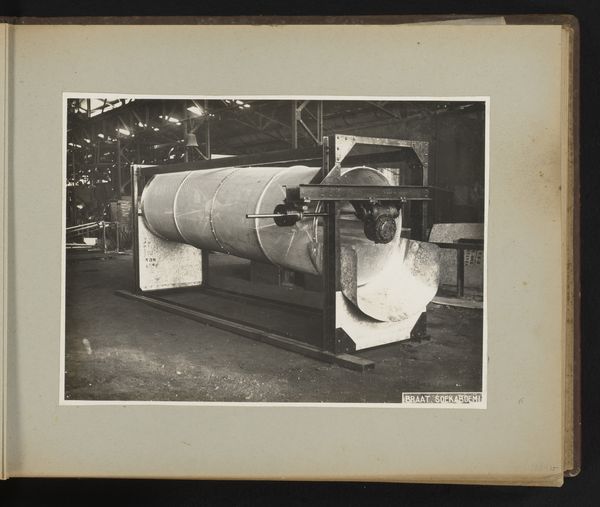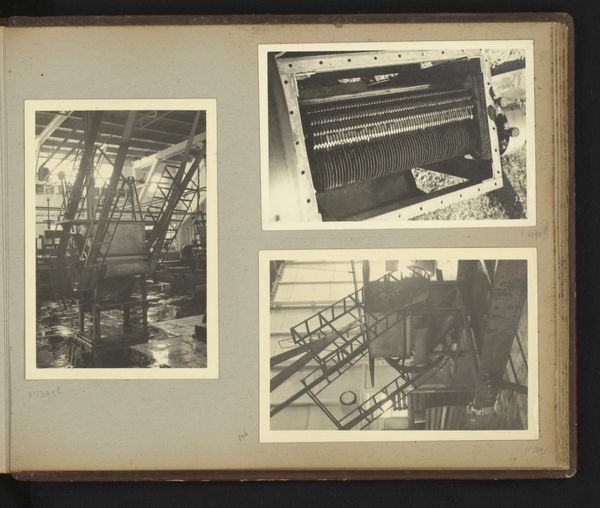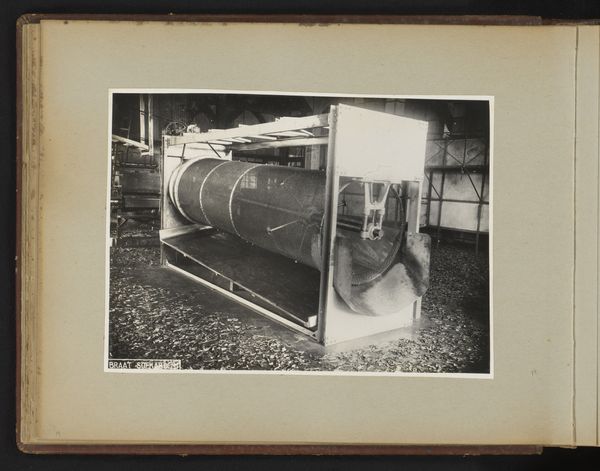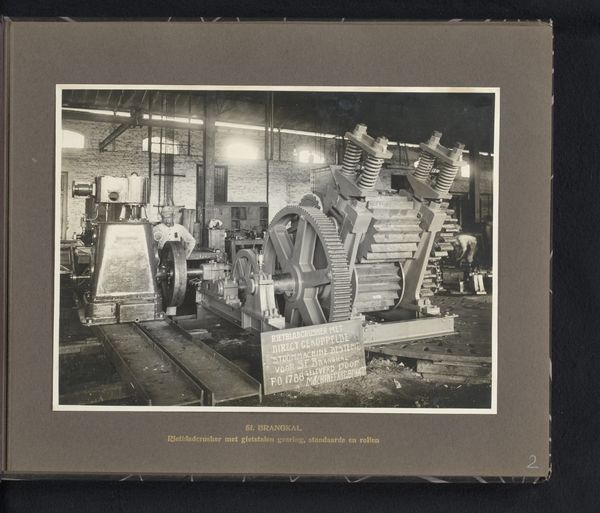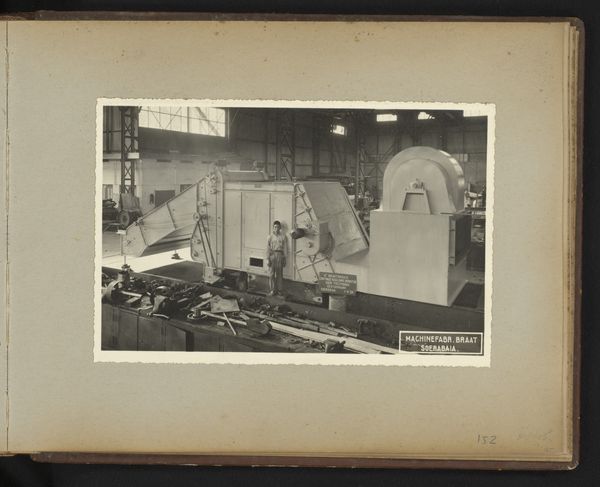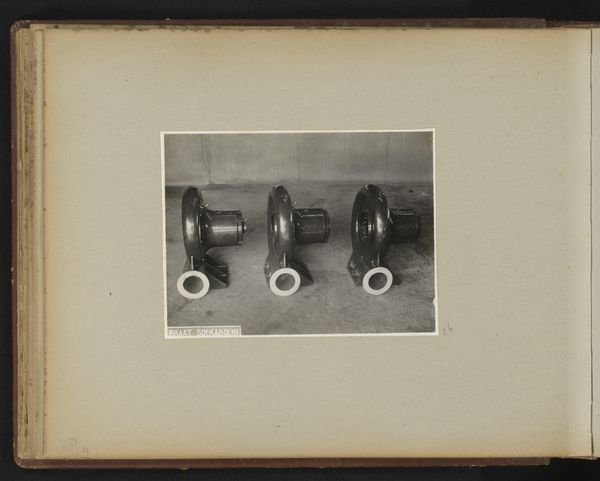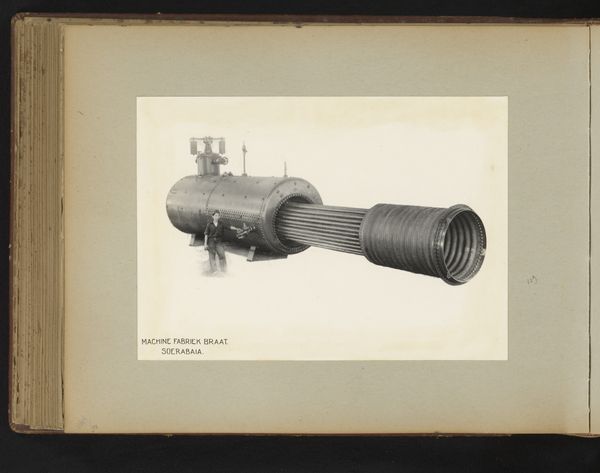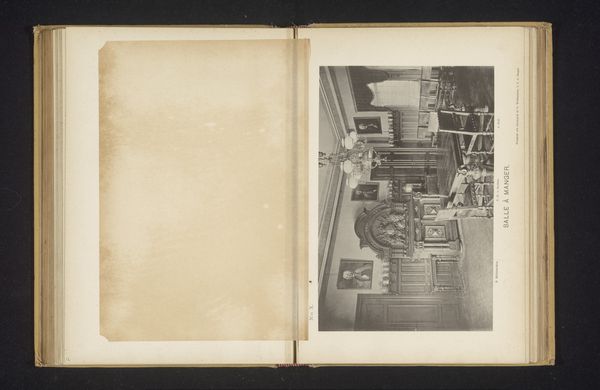
photography, gelatin-silver-print
#
still-life-photography
#
photography
#
gelatin-silver-print
Dimensions: height 106 mm, width 156 mm, height 250 mm, width 320 mm
Copyright: Rijks Museum: Open Domain
Curator: Welcome. We’re looking at a series of gelatin silver prints titled “Machine,” created sometime between 1931 and 1937. They're held in the collection of the Rijksmuseum. Editor: My first impression is a rather grim one. It evokes industry, yes, but of a particular kind; severe, repetitive, almost punishing in its geometry. What function does it serve? Curator: These stills seem to present the machine as a subject for its own sake. It reminds me of the machine age aesthetic; a near deification of the industrial object, as though the mechanisms themselves held a kind of silent power. There’s also something inherently still life about this particular kind of photograph. A kind of staged isolation that emphasizes formal elements. Editor: Absolutely, the stark contrast emphasizes the physicality of each part. This brings forward all the material of production itself. It reminds me of a workshop or even a factory. One wonders about the labor practices surrounding its creation, the wear and tear on both object and maker. Was this machine presented as the way to increase efficiency, and thus to lay off the working class? Curator: It is difficult to consider it otherwise. You note how these geometric patterns seem somehow punishing, I believe you point to what has also come to be called "Fordism," which promotes efficiency through the deconstruction of the laborer. Still-life photography tends to render things separate from their functionality, it highlights this disjuncture. But, equally important is the notion that the still life is used to record an idea. These machines take on iconic import, they become stand-ins for a greater symbol that resonates with cultural import and memory. Editor: That emphasis on efficiency does indeed dehumanize the laborer by ignoring craft, the lived bodily experience. A focus solely on optimization. It raises interesting questions of whose history is being remembered or conveniently forgotten here. I notice the fingerprints near the borders. Curator: Yes, I can see why it creates an ominous association. Editor: I will say, now looking at this material, these metallic grays...It causes a sensation. Very striking piece and discussion! Curator: Agreed! The geometric nature seems very telling in many unexpected ways.
Comments
No comments
Be the first to comment and join the conversation on the ultimate creative platform.
